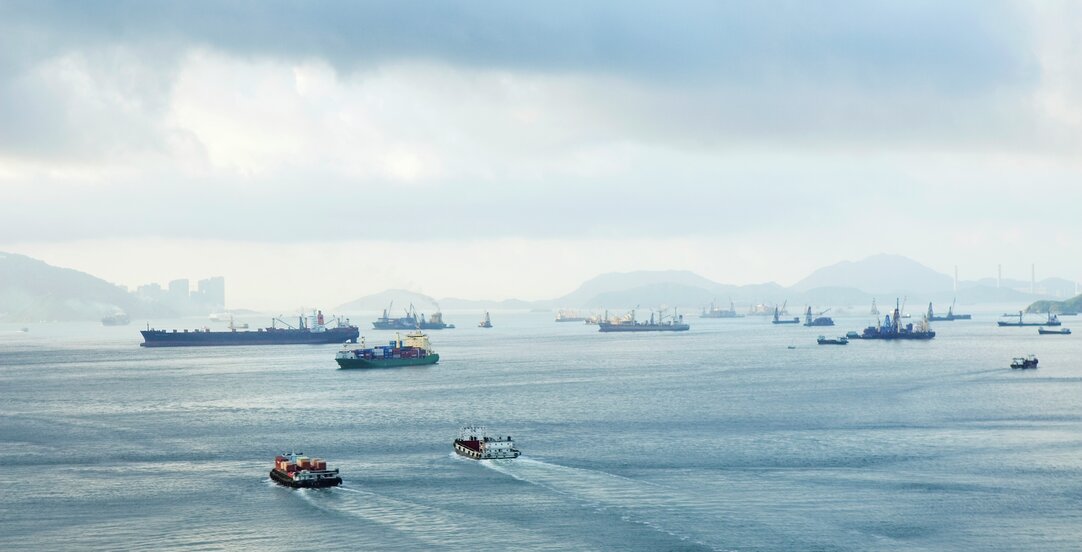Key aspects of the new FuelEU Maritime proposal

On 14 July 2021, the European Commission presented a package of proposals aimed at ensuring that the European Union achieves its goals of cutting greenhouse gas emissions by at least 55% by 2030. The proposals include, among other things, the new FuelEU Maritime initiative, specifically aimed at the shipping industry.
Lesetid 5 minutter
The FuelEU Maritime proposal is highly technical in nature. However, at its core, the proposal aims to implement two specific measures, namely:
- an obligation for certain types of vessels to use an onshore power supply or zero-emission technology in ports; and
- the introduction of increasingly stringent limitations on the carbon intensity of fuels/energy used on board vessels.
The obligation to use an onshore power supply or zero-emission technology in ports is so far only proposed to apply to containerships and passenger vessels, and is not set to kick in until 1 January 2030.
Due to this measure’s limited application, this article focuses on the second measure, namely the requirement to reduce the greenhouse gas intensity of fuel/energy used on board vessels.
The reason for limiting its application only to container and passenger vessels is that these are the vessels which, according to data collected by the European Union, produce the highest amount of emissions at berth. Although this part of the regulation currently has a limited scope, there is a relatively high likelihood that the scope may be expanded to include other vessel types in time.
Limiting greenhouse gas intensity of energy used on board vessels
As drafted, the proposed limitation on greenhouse gas intensity will apply only to vessels with a gross tonnage of over 5,000, regardless of the vessel’s flag. Various types of vessel will however be exempted, such as fishing vessels, naval vessels and government vessels used for non-commercial purposes.
For those vessels to whom the proposal will apply, the required reductions will be applied over time based on the following timeline:
- a reduction of -2% from 1 January 2025;
- a reduction of -6% from 1 January 2030;
- a reduction of -13% from 1 January 2035;
- a reduction of -26% from 1 January 2040;
- a reduction of -59% from 1 January 2045; and
- a reduction of -75% from 1 January 2050.
How these reductions are to be achieved is not specified however. As a result, there has been some criticism that many shipowners will, at least initially, simply look to switch from more carbon heavy bunker fuels to lower emission fuels such as liquefied natural gas (from fossil fuel sources) and biofuels rather than seeking to switch to the use of zero-emission fuels such as electricity, hydrogen and ammonia. Whilst the European Commission has responded to such criticism by including specific provisions aimed at reducing the use of biofuels, biogas, renewable fuels of non-biological origin and recycled carbon fuels in its proposal, there will no doubt be continued criticism that the proposals do not go far enough, at least in the early phase of its application.
In terms of its scope, the regulation is intended to apply to all energy used on voyages between EEA member states’ ports of call. To disincentivise shipowners from seeking to avoid their responsibilities by evasive port calls, it will also apply for voyages departing from or arriving to a member state port of call but where the last or the next port of call is in a third country outside the EEA, albeit to only 50% of the energy consumed.
In the event that a vessel has a compliance surplus for a particular reporting period, it is proposed that shipowners may bank that surplus to the same vessel’s compliance balance for a subsequent period and if a vessel has a compliance deficit for a reporting period, shipowners may, within certain limits, borrow from a future compliance surplus. Shipowners will also be allowed to pool the performances of different vessels within a fleet and use the possible overperformance of one vessel to compensate for the underperformance of another vessel.
The person or organisation responsible for compliance with the regulation is intended to be the shipowner or any other organisation or person, such as the manager or the bareboat charterer, who has assumed the responsibility for the operation of the vessel from the shipowner. This definition is in line with similar definitions used by the IMO, for example, in its 1994 international safety management code for the safe operation of ships and pollution prevention (the ISM Code), as well as the definition proposed for the EU ETS (which is covered in the article on page 8 in this newsletter). Shipowners that wish to hold other entities responsible for penalties and other losses which may occur will therefore need to ensure that this is clearly specified in their contracts.
The relevant responsible entity will then be responsible for monitoring and reporting relevant data for each of its vessels. Monitoring and reporting must be complete and cover the energy used on board vessels whilst they are at sea as well as at berth and the data provided will be required to be verified by accredited, independent and competent verifiers. Based on the data, the verifiers will then calculate and establish the annual average greenhouse gas intensity of energy used and the vessel’s balance with respect to the applicable limit. Provided that there is no deficit, the verifier will issue a FuelEU certificate of compliance. Vessels will be obliged to carry this certificate.
For any vessel that does not meet the annual limits, a penalty system will be established. The penalties will be calculated on the basis of specific rules set out in an annex to the regulation, but generally based on the amount and cost of renewable and low-carbon fuel that the vessels should have used in order to meet the relevant requirements and the FuelEU certificate of compliance will not be issued until all penalties have been paid. Within the European Union, penalty payments received will be allocated to support projects aimed at the rapid deployment of renewable and low-carbon fuels in the shipping sector.
Comment
After the FuelEU Maritime proposal was presented, many stakeholders have highlighted that a global approach is necessary in order to tackle greenhouse gas emissions from the shipping sector, and that the FuelEU Maritime proposal should be harmonised with the work being done at the IMO. However, after IMO’s Marine Environment Protection Committee (MEPC) 77, which was held in November 2021, it seems unlikely that there will be any significant developments at the IMO before 2023. In order to achieve its goals of cutting greenhouse gas emissions by at least 55% by 2030, the EU might therefore in any event have to act before any international rules are adopted by the IMO.
